| Back in southern New Mexico we soon came to Carlsbad Caverns,
one of the largest cave systems in the world. As usual, there are many parts
to the system but only a few have been opened to the public. The main open
cave is unusual in that you are
allowed to walk freely within it providing you keep to the pathways rather
than having to travel with a party and an official guide, at their pace.
Our way in was by a 1.5
mile path which zigzags sharply down from this entrance hole, eventually leaving
you 750ft underground. It is also possible to go straight down in a lift,
but then you miss some of the formations, and the sense of adventure the
original explorers must have felt. | 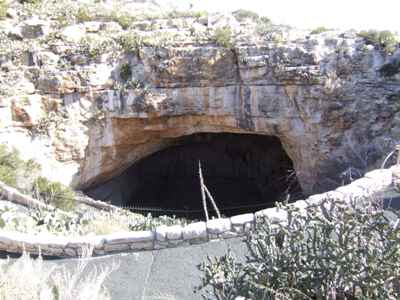 |
From March to October, part of the system, which is not open to visitors, is home and nursery to millions of Mexican free tailed bats. It is a popular summer attraction to go and watch them as they fly in and out of the hole at dusk. They eat six tons of insects each night - this creates large amounts of guano, as shown at the right.
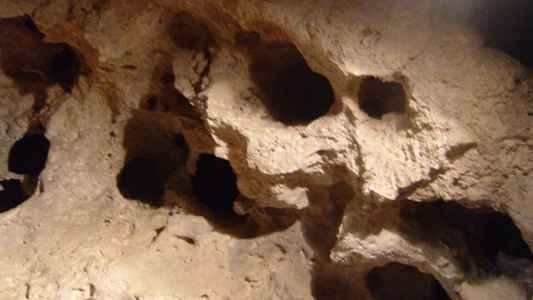 | The
caverns are in limestone, and were originally created by carbonic acid
eating the rock away in small holes like these. Over millenia they can grow
to an enormous size. The caverns still have areas where the process began
but has not progressed to the same scale. |
| The entrance to the caverns is large enough that must have been
discovered fairly easily. Over 1,000 years ago Indian peoples had visited
them and left drawings near the entrance, but without a reliable source of
portable light they could not have explored them very far. The bat guano is
a valuable fertiliser, and it was the search for this that led to the
original exploration of the caverns by the European settlers. There are
still parts of the system waiting to be explored, but these days they have
rather better equipment than the first explorers used. And the first
tourists had to be lowered into the caves in guano buckets! | 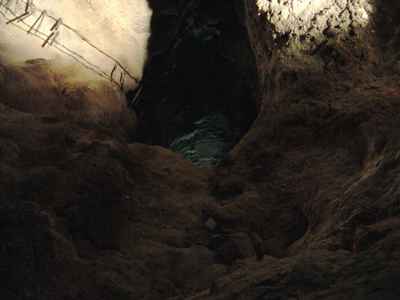 |
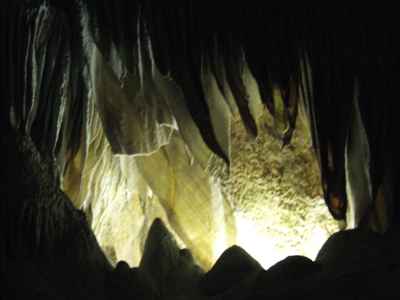 | The
caverns display all the 'normal' formations that we have already seen in the
other caves we have visited. These are draperies because they resemble
hanging folds of fabric so closely. Some draperies hang straight, and
especially when they are coloured by iron impurities in the dripping water,
they look much more like slices of bacon, hence their name of 'cave bacon'. |
| Another of the commoner features is cave 'popcorn'. | 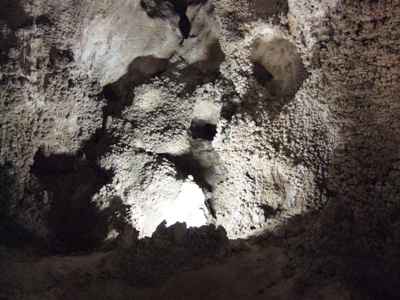 |
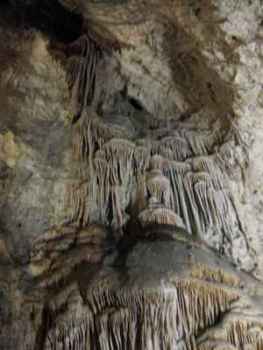 | The
smooth formation on the left is known as 'flowstone' and combined with the
vertical columns it looks very like a
frozen waterfall. |
| This is a stalagmite with flowstone draped over and around it. It is an ongoing process,
as the water is still dripping down, forming this mirror-like pool at the
stalagmite's base. | 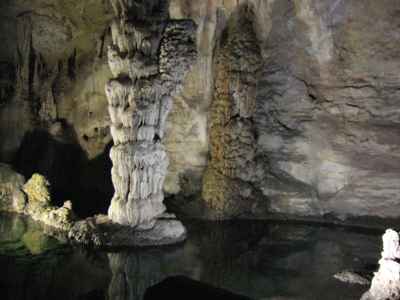 |
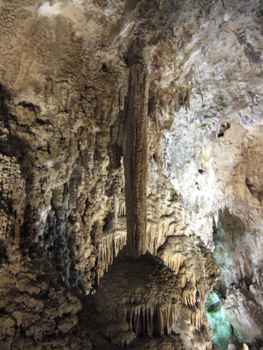 |
Stalactites grow down and stalagmites grow up. Eventually many meet and form
columns. |
| Although these have not yet become columns, they are nearly
touching the cave roof, and they are enormous. This 'room' must be sixty feet high and is known as the Hall of Giants. | 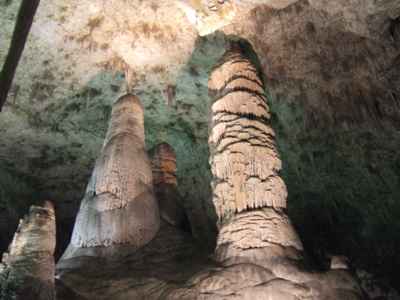 |
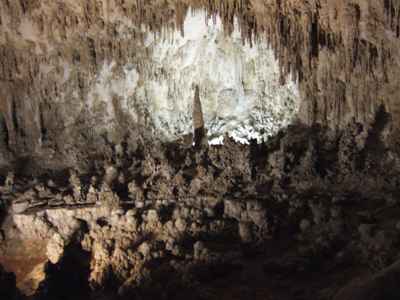 |
There are just millions of elements in some of the formations, and nowhere
else have we seen so many stalactites hanging so closely together. | 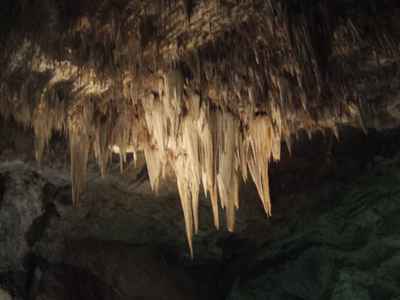 |
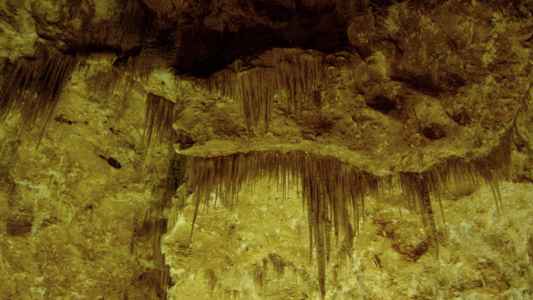 | This
shot is interesting as the stalactites have formed only along the fault
lines where the water has been able to seep through the rock. |
| Along
the way you get some spectacular shows particularly where there are
impurities which add the colours. | 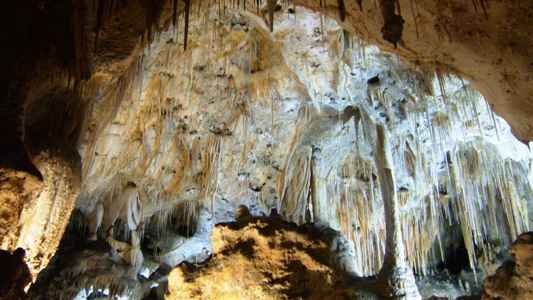 |
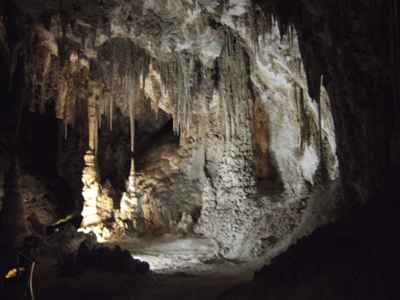 |
Carlsbad is a lot drier now than it used to be. There was more water about
when these formations were created. Now they just grow more slowly. | 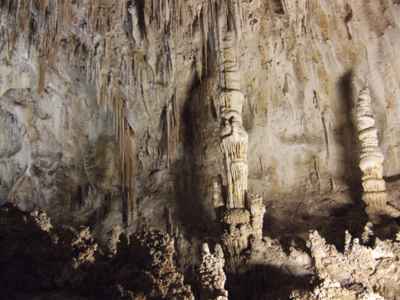 |
| This is one formation that we had not seen before. It is called a 'lion's tail' and
is a stalactite with popcorn on the end. | 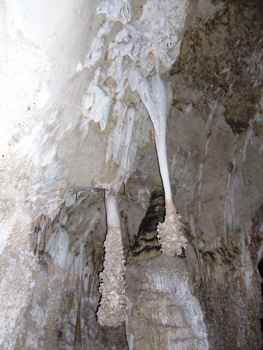 |
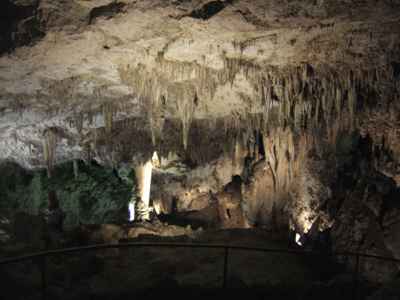 | It is
quite impossible to demonstrate the size of this cavern system or its many
features in photos. But it is vast. |
| This
is another flowstone formation. Very few of the formations have a name, the
park authorities leave it to their visitors to imagine what they resemble. | 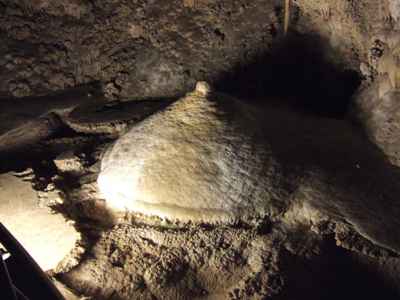 |
Many of the features are artistically lit. The lighting design was done by a Broadway lighting engineer. Iron impurities lead to red coloration and copper to a blue/green. The lighting picks these out and enhances them.
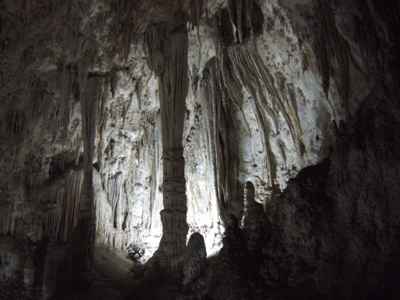 | It
also helps the photography in conditions where you normally would be able to
see very little. | 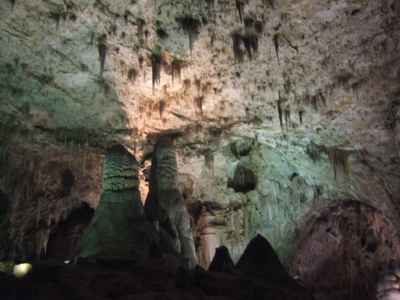 |
| And eventually you take the lift back up 75 stories and
come out to look over the huge flat plain of the Chihuahuan Desert to the south, which is Texas. It
makes Kansas look lumpy! There is precious little in the next 500 miles! | 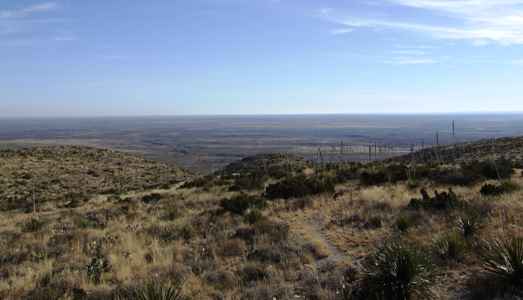 |
|